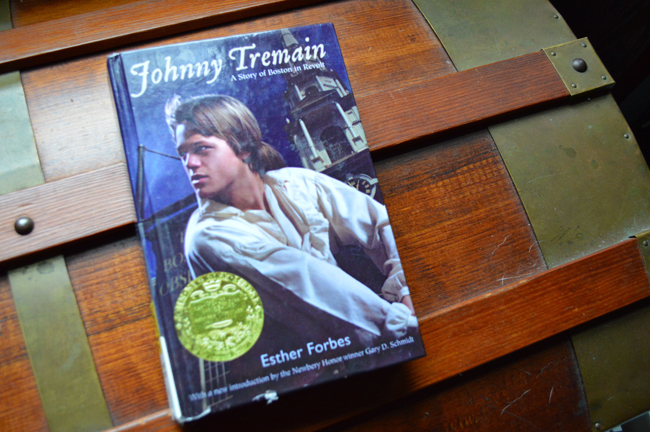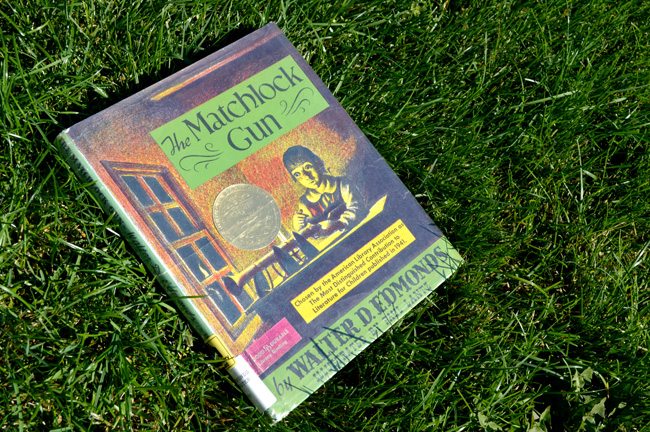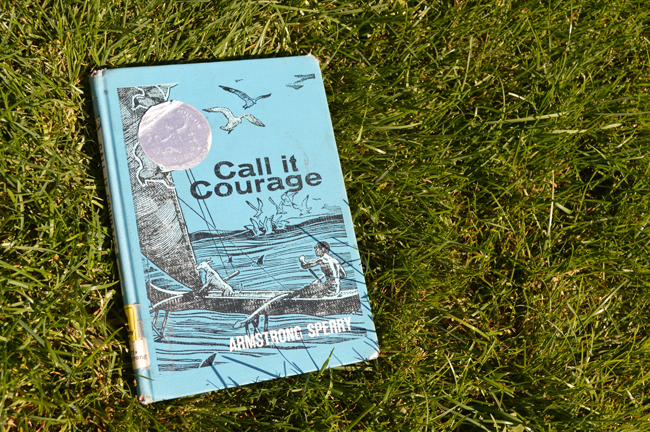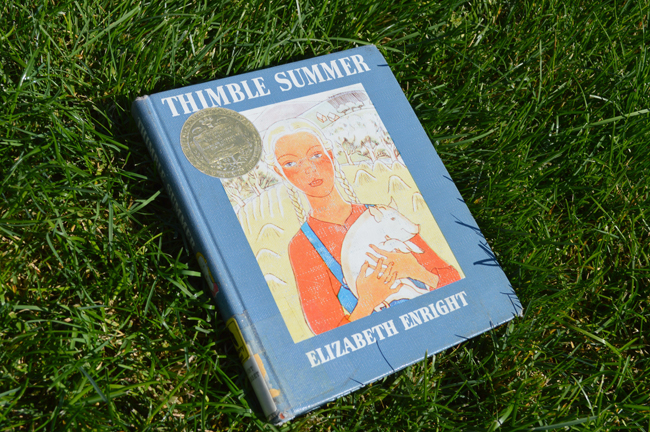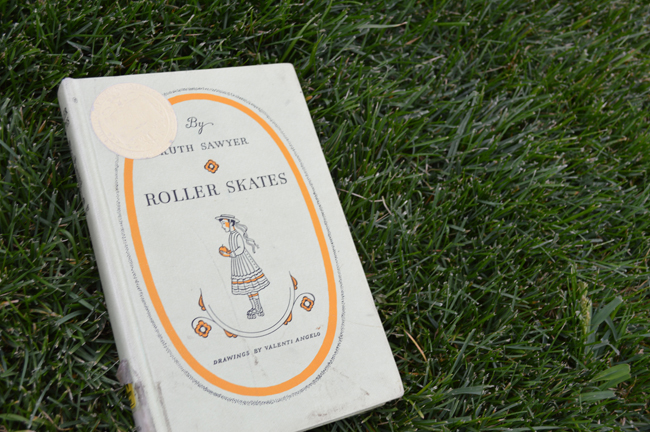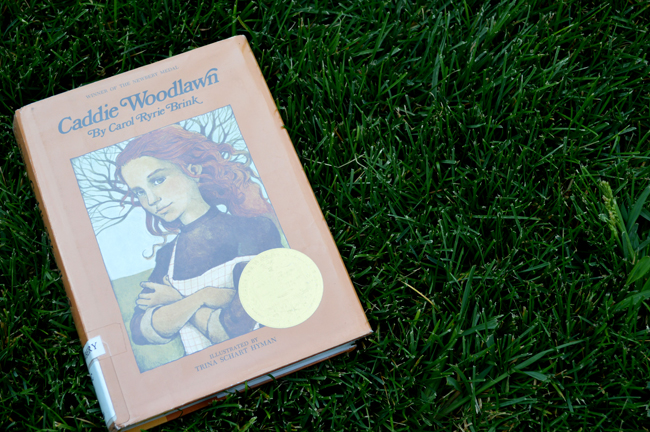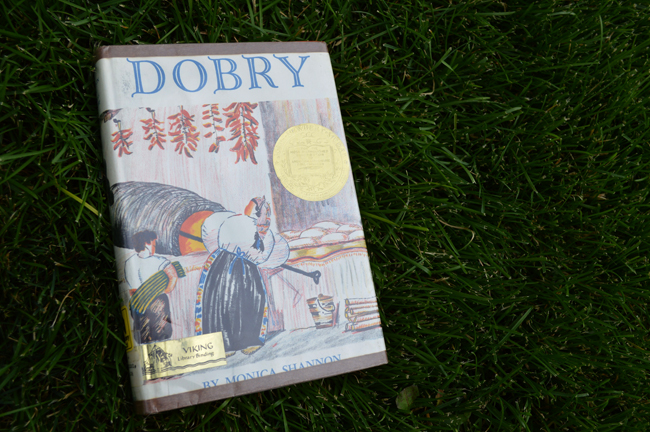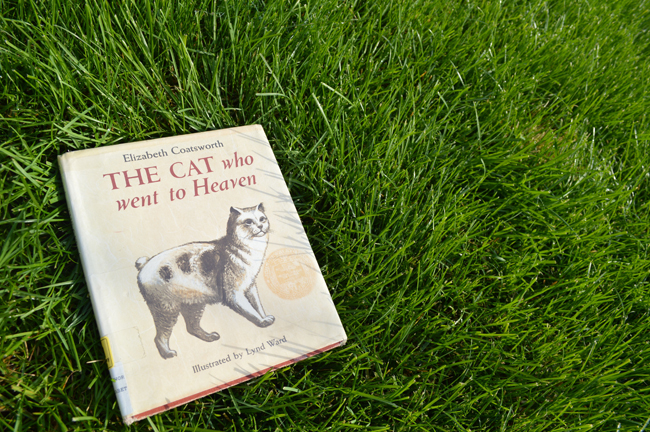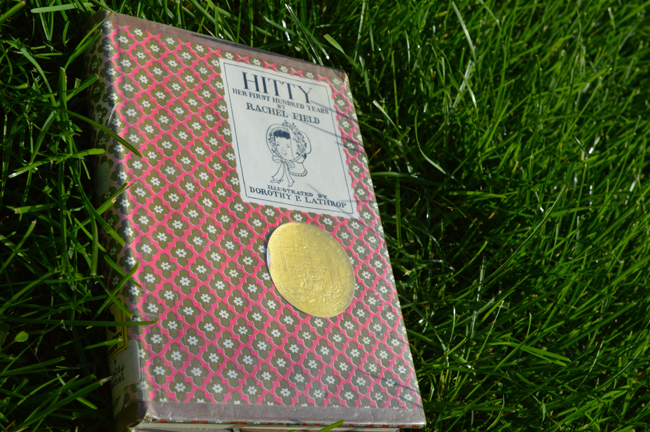The 1944 Newbery winner Johnny Tremain by Esther Hoskins Forbes came at the exact time that I’ve been helping Evan’s 10th graders study the American Revolution. I wanted to get 65 copies of the book and make them all read about this Boston silver smith who at their age got wrapped up in…
Category: Newbery Book Reviews
Newbery Review # 22 (Adam of the Road, Gray, 1943)
Adam of the Road by Elizabeth Janet Gray was the first re-read in this Newbery journey. I read Adam of the Road for the first time less than two years ago. Adam of the Road was a favorite of my husband’s, and we own a well loved copy. It is about a 13th century…
Newbery Review # 21 (Matchlock Gun, Edmonds, 1942)
Walter Edmond’s, The Matchlock Gun is the 1942 Newbery winner. This little tale is the story of Edward Van Alstyne, a ten year old boy of Dutch and German descent living in upstate New York about the time of the American Revolution who helps his mother protect his home and sister against warring local…
Newbery Review # 20 (Call it Courage, Sperry, 1941)
With Call it Courage by Armstrong Sperry, the 1941 Newbery winner (number 20), we join Mafatu, a boy afraid of the sea, as he leaves his island in a moment of rash courage and survives a wild storm. He lands on a wild island where he must survive and escape being made a human…
Newbery Review # 19 (Daniel Boone, Daugherty 1940)
The 1940 Newbery Medal Winning book was Daniel Boone by James Daughtery. What I liked. Once in passing, my maternal grandmother mentioned that our family is directly descended from Daniel Boone. I haven’t done any research into whether this is true, but it’s always stuck with me. It seems me that most people, myself…
Newbery Review # 18 (Thimble Summer, Enright 1939)
The 1939 Newbery Medal winner, Elizabeth Enright’s Thimble Summer, was really lovely. It was one of my favorite early Newberies so far, and not just because it’s about a plucky Wisconsin girl named Garnet Linden—but that does help. Thimble Summer tells the story of a 1930s family in Southwestern Wisconsin one summer when…
Newbery Review # 17 (White Stag, Seredy 1938)
In a high-fantasy style, 1938 Newbery winner The White Stag, written by author and illustrator Kate Seredy, lays out the mythology of the ancestors of and prophecy surrounding Attila the Hun and his epic journey into his European promised land. In a tale that seems both like a tiny Wagner opera and Norse-Eastern…
Newbery Review # 16 (Roller Skates, Sawyer, 1937)
This week’s Newbery, Roller Skates by Ruth Sawyer, features feisty 10 year-old-Lucinda, who is a bit like if Anne Shirley (of Green Gables) got stuck in Manhattan with a pair of roller skates. Set in the 1890s, affluent and inadvertently-troublemaking Lucinda has a year of freedom when her parents go to Italy for…
Newbery Review # 15 (Caddy Woodlawn, Brink, 1936)
I do not know how I grew up not reading this week’s Newbery. It was great! Caddie Woodlawn by Carol Ryrie Brink is based on the life of the author’s grandmother Caddie. Caddie is the middle daughter of a miller’s family growing up near Menomonie, Wisconsin in the 1890s, and Caddy is a…
Newbery Review # 14 (Dobry, Shannon, 1935)
This week’s Newbery, Monica Shannon’s 1935 Dobry, follows a little Bulgarian peasant boy named Dobry, who loves the beauty of his farming community but longs to capture it in drawings and sculpture instead of just tending the fields. A cozy tale for the beginning of winter, Dobry has vibrant characters — a storytelling grandfather,…
Newbery Review # 13 (Invincible Louisa, Meigs, 1934)
This week’s Newbery winner was another surprise—the 1934 biography of Louisa May Alcott: Invincible Louisa: The Story of the Author of Little Women by Cornelia Meigs. Published a hundred years after her birth, Invincible Louisa traces the Alcotts’ many (29 in 28 years) moves across New England with their four daughters: Anna, Louisa, Elizabeth…
Newbery Review # 12 (Young Fu, Lewis, 1933)
I was surprised by how much I liked the 1933 Newbery winner Young Fu of the Upper Yangtze by Elizabeth Foreman Lewis. A Bildungsroman, or coming-of-age novel, the book follows Young Fu through his coppersmith apprenticeship in 1920s Chungking, China. Following the death of his father, Young Fu and his mother Fu Be Be…
Newbery Review # 11 (Waterless Mountain, Armer, 1932)
This week’s Newbery winner from 1932 has us returning to the States, but this time we’re in the southwest with Laura Adams Armer’s Waterless Mountain, the coming of age tale of a young Navaho (the 1930s spelling of Navajo) boy named Younger Brother. The story opens when Younger Brother is eight and first begins…
Newbery Review # 10 (Cat Who Went to Heaven, Coatsworth, 1931)
The shortest Newbery with so much emphasis on the illustrations, Elizabeth Coatsworth’s 1931 The Cat Who Went to Heaven, almost seems like a long picture book (something about the length of My Father’s Dragon or The Little Prince). It tells the story of a poor artist whose housekeeper brings him a lucky cat, Good…
Newbery Review # 9 (Hitty, Field, 1930)
The 1930 Newbery Award Winner Hitty, Her First Hundred Years, by Rachel Field follows a small wooden doll around the nineteenth century world as she is lost and found by an assortment of owners. The 5 inch doll Hitty begins her life when a wood-carver peddler takes refuge from a winter storm in Maine…
